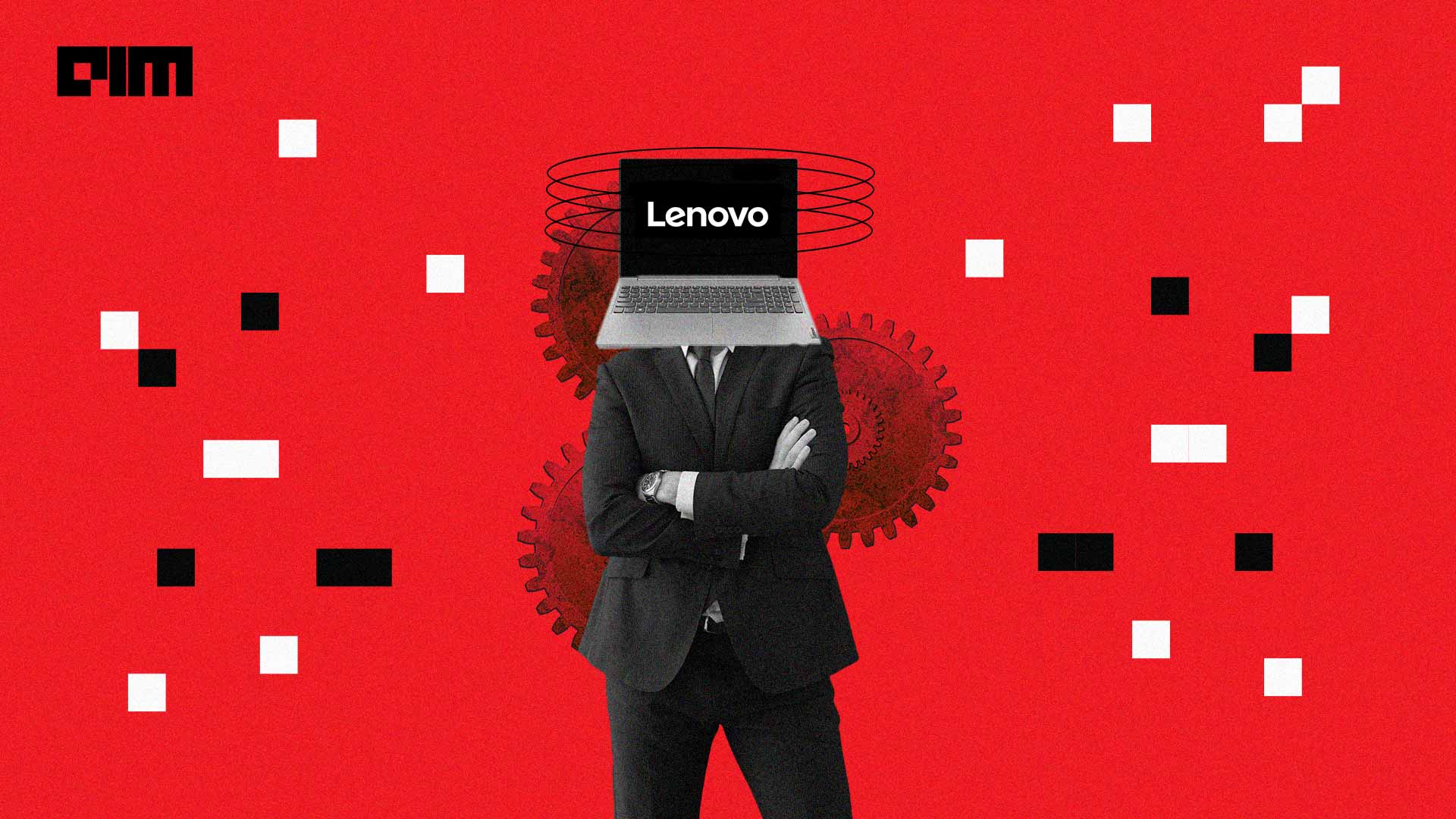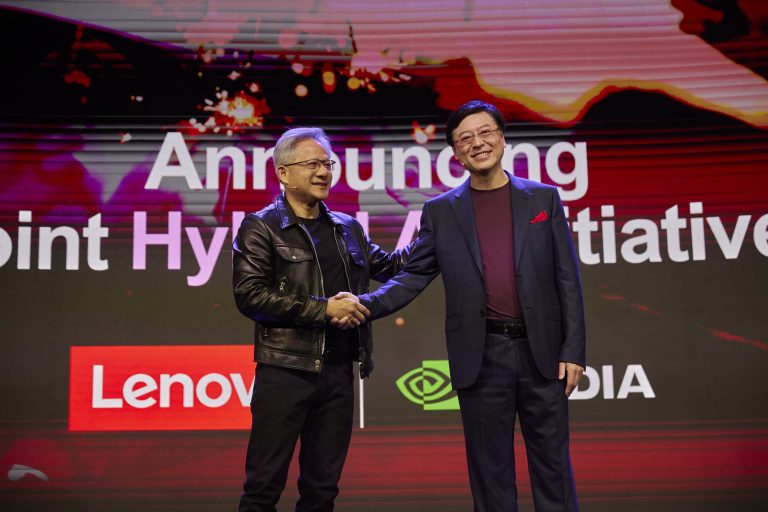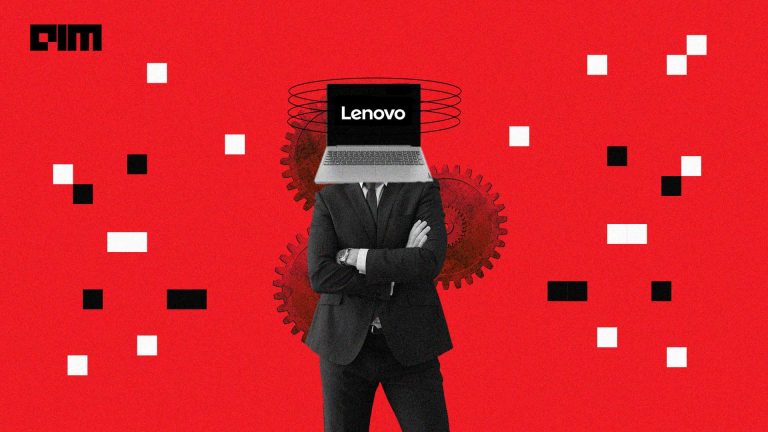|
Listen to this story
|
UI/UX is increasingly becoming the core of organisations’ development process, and product companies work consistently with the users at all process stages to ensure the product is customised as per the wants and requirements of the users. The shift to a user-centric approach to design is only possible because data is now available at length and can be accessed at scale.
Analytics India Magazine reached out to Dilip Bhatia, Chief Customer Experience Officer and VP of User & Customer Experience at Lenovo, to understand the design principles that Lenovo follows in building its products.
From the get-go, Bhatia said that the motto within the organisation—when it comes to the user experience perspective—is data-driven and customer-centric, which implies a key focus on how the organisation can leverage data to build better products while also not overlooking the human element of it.
Inside Lenovo’s data gathering practices
There are multiple tools that Bhatia mentions that Lenovo uses to understand its customers and to look at product development in an increasingly holistic manner. The following are a few key ones:
- Lenovo has an insights community, where feedback from communities ranging from gaming to small businesses to large enterprise B2B decision-making is recorded. Customer perspectives on price points and a certain so-and-so feature are thus considered.
- The company also has a customer advisory council consisting of Lenovo’s large enterprise customers, where the product teams show them the roadmap for a period of two to three years and simultaneously get their feedback on what is working for them and what isn’t.
- Data is also collected through ethnographic studies. Bhatia cites the example of the Lenovo Legion product gaming line-up, where they found that most of the gamers using their product were also working employees. As a result, Bhatia adds, “If you look at the design philosophy of Legion, it looks very conservative from the outside. But inside, it’s got all the GPU and everything to go with it”.
- Further, Lenovo also has video tools to survey people worldwide and has the processing capabilities to go through thousands of hours of people recording from homes and offices—stating what is working and what needs improvement.
- Finally, the power of big data analytics cannot be missed. For instance, Bhatia said that Lenovo is scraping about 66 million comments from the internet (for example, e-commerce sites, social spaces, and so on). On top of this, the algorithm performs a sentiment score based on the comments—whether the product was received positively or negatively. Additionally, product ownership surveys from users—along with B2B surveys from customers—are data points for the algorithms to process and analyse.
Bhatia shared an interesting example of how user research helped them crack the code for an important feature in Lenovo laptops. The shutter on the camera is a privacy feature that was added following conversations with two different customers—one, an engineer from nuclear facilities who objected to cameras on the laptop, and the other, an insurance company executive, who—on the contrary—said that he wouldn’t buy the product unless there is an in-built camera. So, the design stage considered these two feedbacks and added the shutter to make it a win-win alternative.
Data democratisation doing the magic
The next big wave at the enterprise level has been data democratisation so that data can go as low as possible within the organisational hierarchy chain. Bhatia spoke about how Lenovo’s internal tool—the customer experience insights hub—is available to all its employees, implying that the data is accessible to members beyond the survey owners.
In this context, Bhatia further says that, “The tool allows them to map the entire customer journey from purchase to delivery to product uses to software experience to services experience to premium services experience and across the entire journey by segments, by the consumer, SMB, commercial, global customers, by infrastructure solutions group or services group as well as to do anything by country”. Hence, dedicated personnel from the global supply–chain department, for example, can read customer comments related to the supply chain and take appropriate actions on the same. In this manner, the organisation carries out a real-time implementation of the received feedback.
To go one step further, the analytics tool—although currently in its beta stage—can predict whether customers will stay with them based on knowing what they think about the product or what they’re unhappy with. So, besides identifying the customer’s voice, the company also has their revenue data and third-party data in terms of their spending in the industry to perform customer risk analytics. This data is only accessible to a select few. So, a sales representative—based on whether they are an executive or a regional head—will know exactly which accounts are higher risk and which ones are lower. Each department thus gets personalised data to work with.
The Lenovo Data Centre footprint is pan-India, notably across all major metros. In 2021 alone, approximately 1000+ data centres were built in India. Bhatia further said that a huge part of Lenovo’s data analytics organisation is based in Bengaluru while emphasising that:
“Customer experience is ultimately about data analytics.”
AI chips for optimising performance
When enquired about how custom chips enable seamless user experience, Bhatia described that—from an end-user perspective—the primary issue customers face when it comes to their devices is performance. Even today, performance remains an issue with all the different applications they use, such as Google Chrome, Teams, or Zoom, thus taxing the systems. Here, using a custom chip allows one to offload a lot of tasks. A lot of these applications mentioned earlier can thus be processed on a purpose-optimised chip instead of letting it use the main processor. However, he adds that with app compatibility and everything, a lot of work needs to be done to ensure that it is a seamless experience.
Currently, Lenovo is partnering with a number of vendors to fill its chip needs. According to Pandaily, since the establishment of Lenovo, its three related subsidiaries—Lenovo Capital and Incubator Group, Legend Star and Legend Capital—have invested in 23 chip companies, with Lenovo Capital and Incubator Group alone having invested in ten chip companies, including Cambricon, SmartSens Technology and Chip Wise. Moreover, earlier this year, Lenovo established its own semiconductor company, Dingdao Zhixin.



















































































